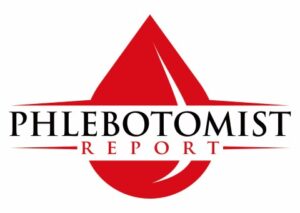When it comes to sharps disposal, there are many do’s and don’ts that we need to adhere to. These do’s and don’ts will ensure that we are protected and keep us safe from needless accidents and injuries.
Proper sharps disposal is needed for maintaining a safe environment and preventing injuries or infections. Sharps, including needles, syringes, and lancets, can pose significant health risks if not disposed of correctly.
Whether you work at a hospital, private lab, doctor’s office or managing medical needs at home, it is important to follow these best practices for sharps disposal. Here are some key DOs and DON’Ts to ensure safe and effective disposal of sharps.
DOs of Proper Sharps Disposal
DO Use a Proper Sharps Container
Use a designated sharps container or one that is approved by health care agencies or the government.
- Puncture-Resistant: Use a container made of durable, puncture-resistant material.
- Leak-Proof: Ensure the container is leak-proof to securely contain all contents.
- Clearly Labeled: Use containers marked with a biohazard symbol and proper labeling to indicate hazardous medical waste.
DO Place Sharps in Container Immediately
- To reduce the risk of needle sticks, cuts or punctures from loose sharps.
DO Dispose of Sharps Containers When They Are 3/4 Full
- Prevent Overfilling: Dispose of the container when it is three-quarters full to reduce the risk of needle-stick injuries and any spilling over accidents.
- Follow Manufacturer Guidelines: Adhere to the manufacturer’s guidelines for maximum fill lines and proper closure.
DO Follow Local Regulations
- Check Guidelines: Verify specific disposal guidelines with your local health department or waste management authority.
- Adhere to Laws: Follow all local, state, and federal regulations regarding medical waste disposal.
DO Use Designated Disposal Methods
- Drop-Off Collection Sites: Utilize hospitals, clinics, pharmacies, or household hazardous waste disposal sites for sharps disposal.
- Mail-Back Programs: Consider mail-back programs for a convenient disposal option.
- At-Home Pick-Up Services: Use at-home pick-up services offered by medical waste disposal companies, especially if generating significant amounts of sharps waste.
DO Store Sharps Containers Securely
- Out of Reach: Keep sharps containers out of reach of children and pets to prevent accidental injuries.
- Secure Location: Store containers in a secure, easily accessible location for proper disposal.
DON’Ts of Proper Sharps Disposal
DON’T Reuse Sharps Containers
- Single Use: Always use a new, approved sharps container for disposal. Reusing containers can compromise safety and lead to accidents.
DON’T Overfill Sharps Containers
- Follow Fill Line: Overfilled containers increase the risk of needle-stick injuries. Dispose of the container when it reaches three-quarters full.
DON’T Dispose of Sharps in Household Trash
- Avoid Regular Trash: Disposing of sharps in household trash can harm sanitation workers and the public. Always use designated disposal methods.
DON’T Flush Sharps Down the Toilet
- Environmental Risk: Flushing sharps can cause plumbing problems and environmental contamination. Use proper disposal methods instead.
DON’T Remove Needles from Syringes
- Keep Intact: Removing needles from syringes increases the risk of needle-stick injuries. Dispose of sharps as a single unit in a proper container.
DON’T Ignore Accidental Needle-Stick Injuries
- Seek Immediate Care: If an accidental needle-stick injury occurs, wash the area with soap and water, apply an antiseptic, and seek medical attention immediately.
What to Do If You Can’t Find an Approved Sharps Disposal Container
There may be times when you find yourself without an approved sharps disposal container for whatever reason. Here’s what you can do if you cannot find a sharps disposal container, ensuring that you still manage your sharps safely and responsibly.
1. Use a Temporary Alternative
a. Find a Suitable Container
You can temporarily use a sturdy, puncture-resistant container with a secure lid. Acceptable alternatives include:
- Heavy-Duty Plastic Bottles: Use a thick, heavy-duty plastic bottle, such as a laundry detergent bottle. Make sure it has a tight-fitting, screw-on lid. It should have the basic features of a good disposal container.
b. Label the Container
Clearly label the temporary container with “Sharps” and a biohazard symbol if possible. This will alert anyone handling the container to the potential danger.
2. Follow Proper Handling Procedures
a. Do Not Overfill
Just like with official sharps containers, do not overfill the temporary container. Dispose of it when it is three-quarters full to prevent needle-stick injuries.
b. Seal Securely
Ensure the lid is always tightly secured to prevent accidental spills or punctures.
If you are unable to find an approved sharps container or have an alternative, you may need to recap the needle. Recapping the needle will help protect from and avoid a needle stick injury.
When needle recapping, do not bend or break the needle and never remove a hypodermic needle from the syringe by hand. This can result in accidental needle sticks, cuts or punctures. Recapping should be done using a mechanical device or the one-hand scoop method. Put needles you recapped in a sharps container as soon as one becomes available.
The ONE-HANDED Needle Technique
- Place the cap of the needle on a table or other flat surface with an object to push the needle cap against it.
- Holding the syringe with the needle attached in one hand, slip the needle into the cap without using the other hand.
- Push the capped needle against the object to seat the cap onto the needle firmly using only one hand.
If you used a vacutainer with a needle and didn’t have anywhere to dispose of it, you would follow the one-hand technique as well.
